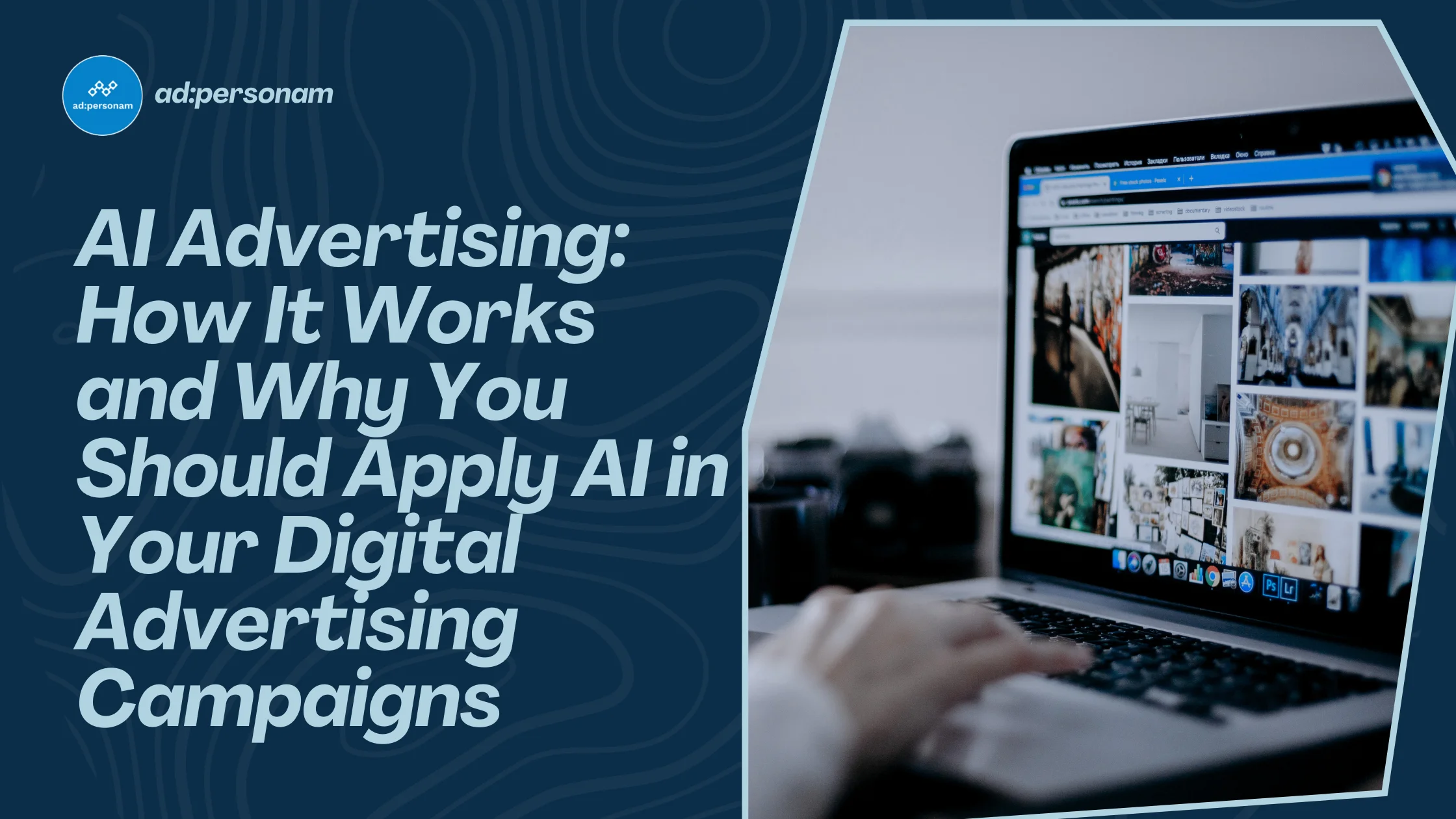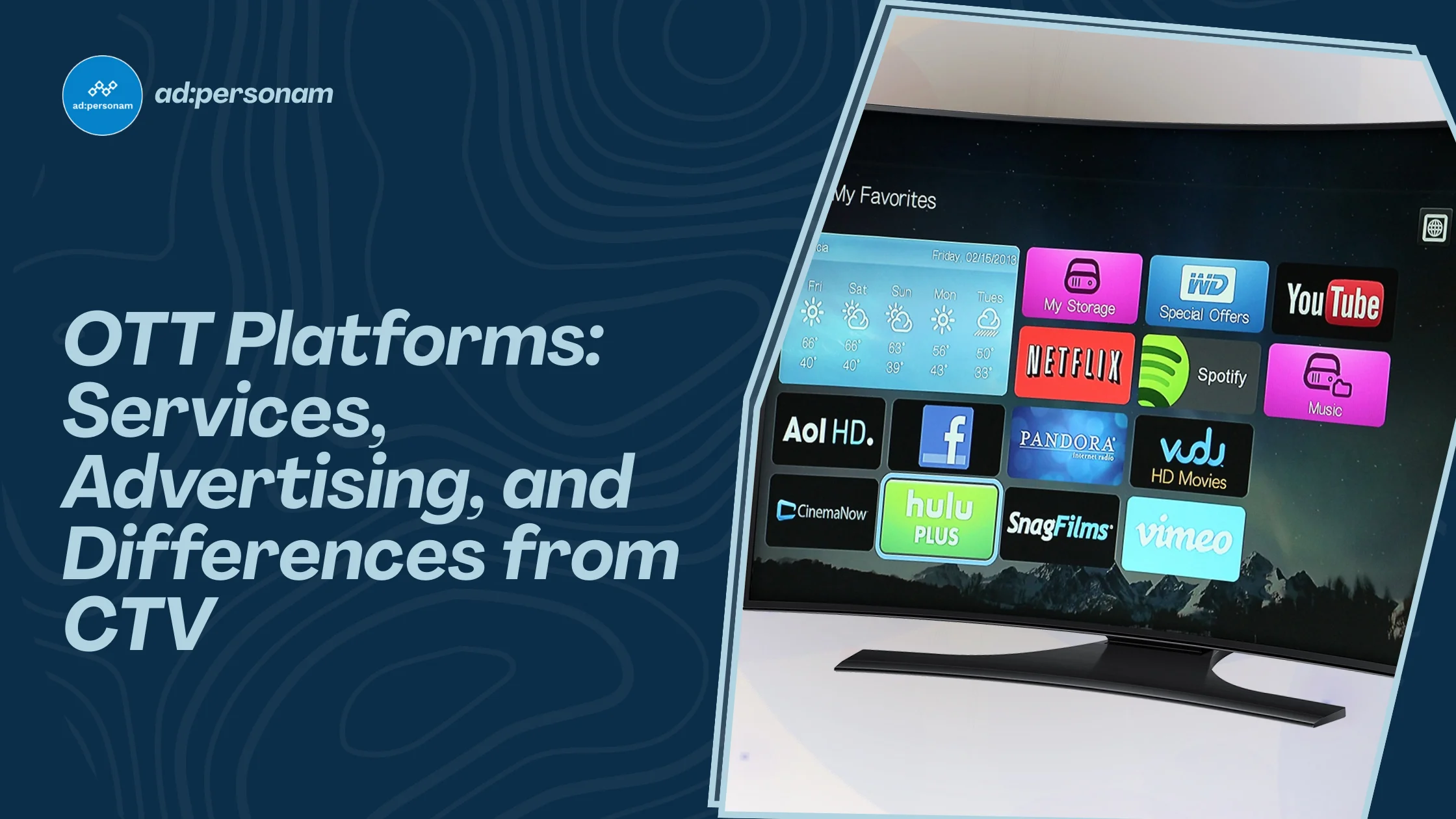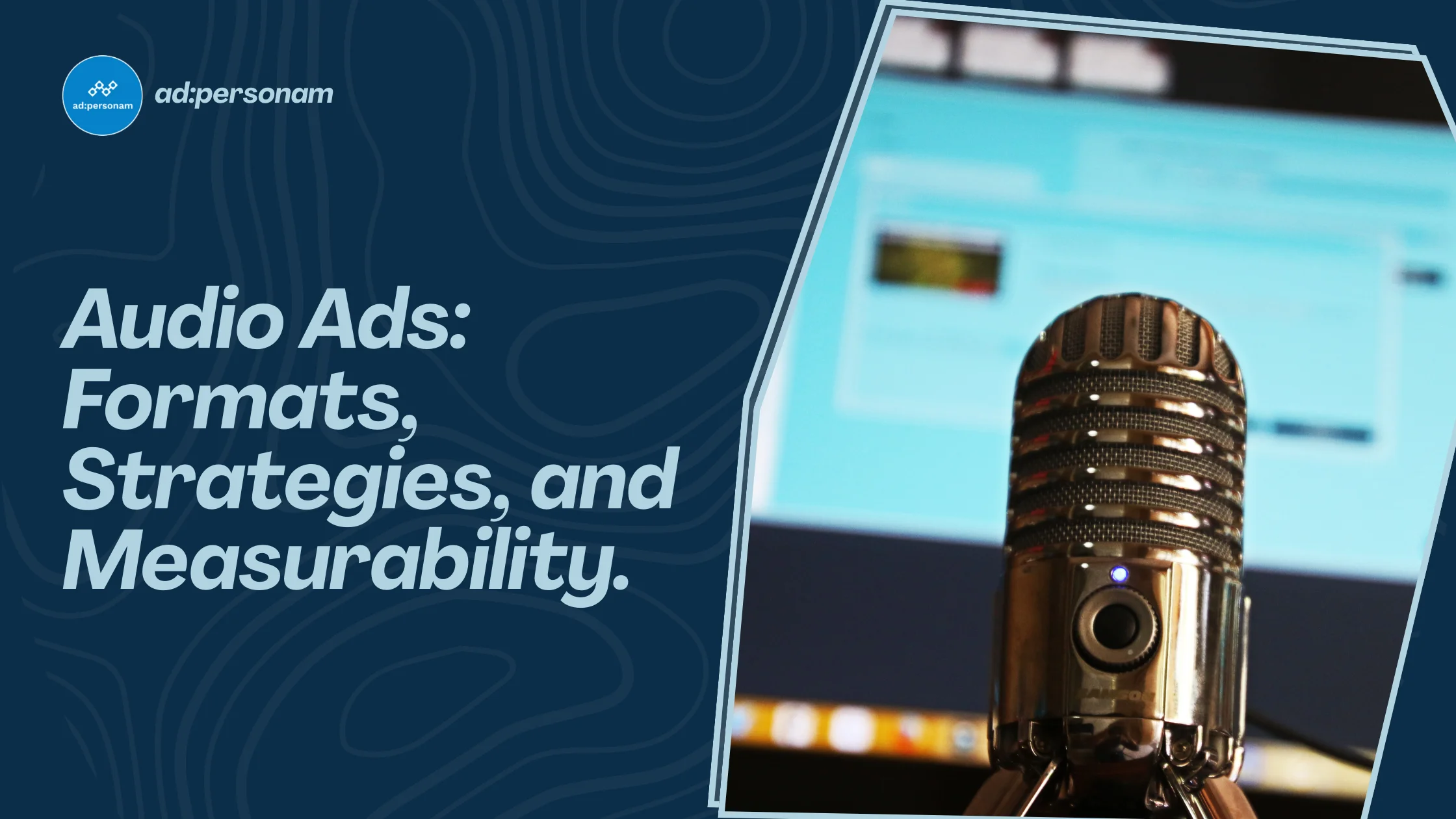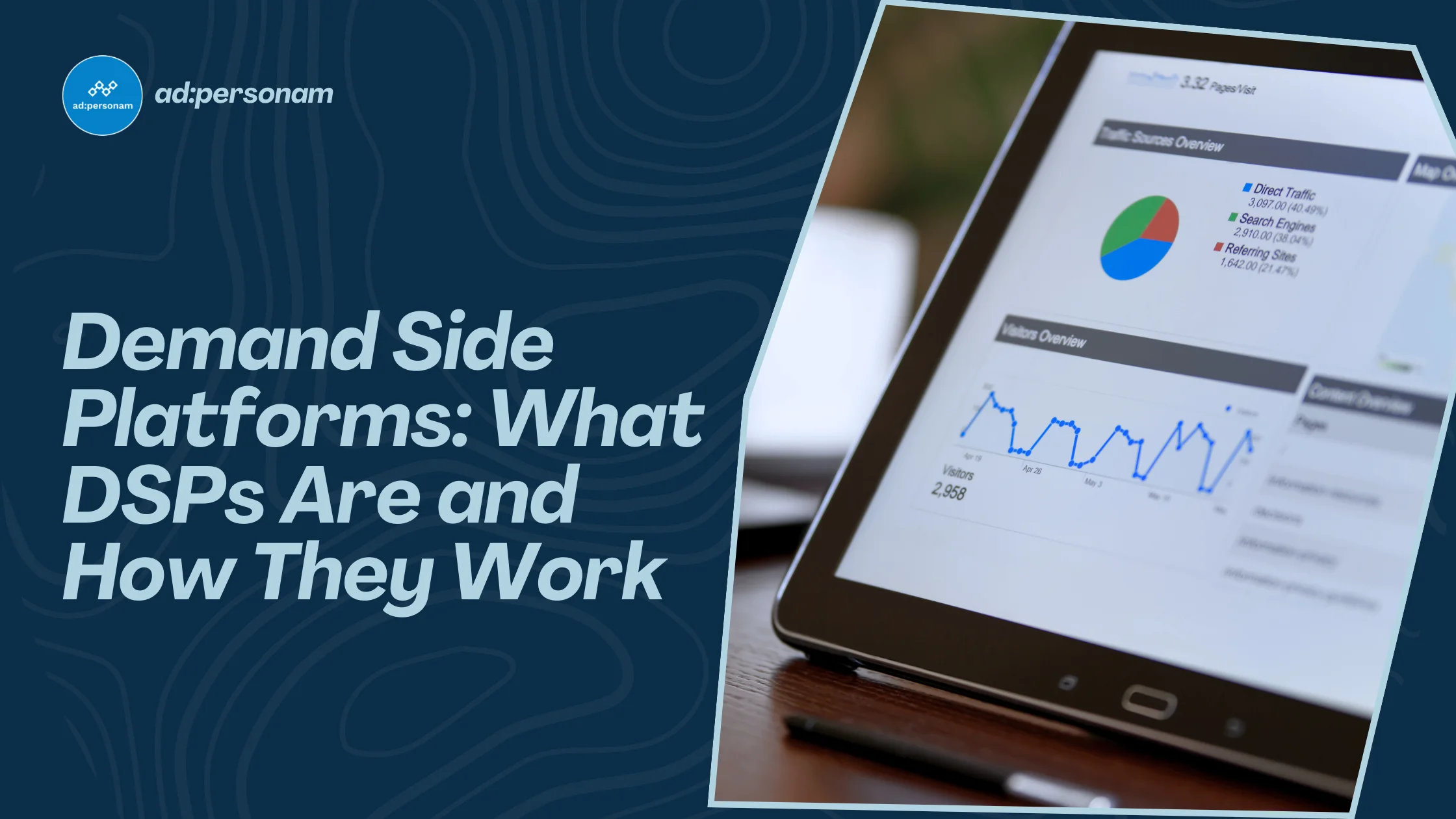AI Advertising: How It Works and Why You Should Apply AI in Your Digital Advertising Campaigns
Discover how AI Advertising works, its advantages and the tools to automate, optimize and scale your campaigns with artificial intelligence.
Contents
- What is AI Advertising
- How AI Advertising Works
- Advantages of AI Advertising for Companies
- Risks and Limitations of AI Advertising
- Practical Applications of AI in Digital Advertising
- AI Technologies Behind Digital Advertising
- AI Advertising for eCommerce: Examples and Advantages
- AI and Data: How to Improve Advertising Decisions
- How to Start with AI Advertising in Your Strategy
- Future Trends in AI Advertising
- Frequently Asked Questions about AI Advertising and ad:personam
- AI Advertising Within Everyone's Reach

Nowadays, AI integration has become fundamental for companies that want to do online advertising more efficiently. This way, it's possible to improve the performance of your campaigns, identifying, for example, micro-segments of audiences or scaling ad performance with precision unthinkable until a few years ago.
In this article, we'll look at the qualities of AI advertising and how artificial intelligence models work to optimize your ads.
What is AI Advertising
When we talk about AI Advertising we refer to the targeted use of artificial intelligence to create, distribute and optimize ads on search engines, social networks, marketplaces and programmatic circuits. It's a subset of AI marketing, which instead also includes CRM, content automation, email and lead nurturing. By selecting a budget, some creative assets and your business objective, AI is able to compose texts, videos, images and, above all, decide where and to whom to show them.
The integration of artificial intelligence in the advertising sector is becoming increasingly central, so much so that Meta has even announced that by 2026 ad creation will be entirely automated.
How AI Advertising Works
The main characteristic of AI Advertising is the ability to learn from data. First it collects information about users (clicks, impressions, dwell time, purchases). Then it applies machine learning models to identify patterns and predict their future behavior. Based on these predictions it builds predictive targeting: it shows the exact ad to those most likely to convert. Thanks to Dynamic Creative Optimization, the same ad changes text, image or call-to-action in real-time based on the profile of who sees it, without you having to manually launch dozens of variants. Consequently, the budget automatically shifts to the most performing ad groups, while A/B testing happens in the background with continuous learning.
Advantages of AI Advertising for Companies
The benefits of AI advertising are measured on multiple levels. First, there's automation: activities that required hours of setup are now done in a few minutes. At Cannes Lions 2025, Qualcomm demonstrated how AI-based workflows saved them over 2,400 hours per month. Added to this is cost optimization: according to some reports published by AIPRM in 2024, if automated algorithms manage budget allocation, then campaign operational expenses will be reduced by 30%. The numbers are reflected in ROAS: eCommerce campaigns supported by AI-generated creativity have recorded returns above 6.7x and, in the most fortunate cases, peaks of 10x.
Risks and Limitations of AI Advertising
Completely depending on the algorithmic "black box" involves governance risks. Transparency and control are the main criticalities: it's difficult to explain why one creative received priority over another or why certain segments are excluded. The massive use of data must also contend with regulations like GDPR and AI Act. On the social level, IDC studies predict that GenAI will take charge of about 30% of basic marketing activities by 2027, raising questions about skills and employment.
The solution comes from responsible governance: periodic model auditing, constant human supervision, data minimization and a corporate culture that keeps creativity at the center.
Practical Applications of AI in Digital Advertising
Practical applications of AI are numerous and increasingly accessible. Predictive targeting leverages advanced look-alikes that analyze hundreds of variables to identify micro-clusters with high purchase propensity. Real-time optimization models ads on users' specific intentions. For example, you might see a different title if you browse from mobile at 10 PM or a different visual if you connect from desktop at 9 AM. AI-generated creatives reduce time-to-market and make variant production sustainable for individual segments. On the media buying front, programmatic AI supplants manual auctions by automatically adjusting capping, frequency and bid-adjustment. When an extra push is needed, dynamic pricing makes prices variable in real-time, while conversational chatbots qualify leads instantly, improving traffic quality.
Some DSPs, like ad:personam, integrate these elements in a single suite: proprietary modules for programmatic buying, multimodal creativity generators and dashboards that read sentiment in real-time, to help you make data-driven decisions. Learn more about our AI-powered advertising solutions.
AI Technologies Behind Digital Advertising
Behind the scenes of AI advertising, multiple complementary technologies work. Natural Language Processing generates texts and adapts tone of voice to the audience; Computer Vision analyzes images to optimize their performance; deep neural networks classify behavioral patterns; generative models (GenAI) create visual and textual assets from prompts, as demonstrated by the growing use of ChatGPT, Gemini or Midjourney. The research "Generative AI in digital advertising" by IAB Europe shows that adoption of these solutions has grown by 48% in one year.
AI Advertising for eCommerce: Examples and Advantages
In the eCommerce sector, AI multiplies results because it combines the potential of dynamic feeds, remarketing and personalization. On Google Ads, Shopping campaigns powered by AI brought a fashion brand to an average ROAS of 6.75x in less than twelve months, without increasing spend. In another case, the use of AI-generated creatives on Facebook pushed returns up to 10x. AI also enriches catalog information with metadata (season, color trends, margins) and activates personalized offers for individual users. Thanks to these insights, it's possible to manage multichannel remarketing, product recommendations and "always-on" campaigns that chase demand in real-time.
AI and Data: How to Improve Advertising Decisions
Data collection is fundamental, but it must be well organized and read with the AI key. Prediction marketing, based on AI-detected patterns, allows you to anticipate when a user is ready to purchase and which message will convince them. Hyper-personalization stems from this approach: every interaction becomes data that feeds increasingly accurate models.
The reports from our ad management platform, ad:personam, show how the budget is shifting and which creative is winning the auction, so you can correct course in a few clicks.
How to Start with AI Advertising in Your Strategy
The first step is defining objectives: direct sales, leads, brand awareness. From here choose AI platforms and tools, evaluating whether to start with native solutions (Google Performance Max, Meta Advantage+) or vertical platforms (ad:personam). Meanwhile prepare the data: it must be clean, homogeneous and privacy-compliant. Start pilot tests with limited budget, letting AI accumulate enough signals to learn. Finally, monitor reports in real-time and intervene where necessary. The learning-optimization cycle never ends: the key is maintaining strong human control that corrects any bias and maximizes the agility of artificial intelligence marketing.
Future Trends in AI Advertising
For the future, Generative AI will focus on multimodal assets (text, audio, video) with a single prompt, while conversational advertising will transform ads into interactive micro-chats. Behavioral data, collected and analyzed in milliseconds, will make targeting so contextual it seems predictive. Multimodal AI will combine visual and textual signals to decide not only who to show the ad to but also when to do it. Automated media planning will finally generate complete cross-channel plans with budget, creatives and KPIs with the same ease we write a prompt in ChatGPT today.
Frequently Asked Questions about AI Advertising and ad:personam
What are the applications of AI in marketing?
Platforms like ad:personam integrate artificial intelligence in marketing to optimize and automate various activities: from data analysis to user targeting, up to creating personalized content. This way, they improve advertising campaign performance in real-time, allowing users to reach the right audience at the right moment.
How much does an AI program cost?
The cost of an artificial intelligence-based program varies depending on the type of solution and its features. In the case of ad:personam, the platform is accessible to everyone, without minimum spending requirements. Users can register for free, paying only for traffic purchased and without hidden fixed costs. This approach makes it a suitable solution for both SMEs and more structured realities.
What is AI marketing?
AI marketing is the use of artificial intelligence to analyze data, automate processes and improve digital marketing strategies. DSPs like ad:personam apply AI directly in the heart of programmatic campaigns, offering features like intelligent targeting, automatic bidding and adaptation of advertising messages based on user behavior.
AI Advertising Within Everyone's Reach
AI Advertising is not just a technological upgrade: it's the key to smarter, faster and more profitable campaigns. Integrating these tools with strategic vision allows you to transform data and creativity into tangible results, maintaining ethical and operational control.
Try ad:personam's Demo and discover how Artificial Intelligence can simplify managing your advertising campaigns.
You might also like

OTT Platforms: Complete Guide to Advertising, CTV, and Streaming Services
Comprehensive guide to OTT platforms: how streaming services work, differences with CTV, and why they matter in programmatic advertising.

Audio Advertising: Complete Guide to Programmatic Audio & Podcast Ads
Discover what audio ads are, explore high-definition audio ad formats, and learn how to create effective digital audio campaigns with programmatic DSP and AI-driven optimization.

Demand Side Platforms: What DSPs Are and How They Work
What are DSPs, how do they work and why use them in programmatic marketing? Discover how you can test ad:personam to create effective campaigns with complete autonomy, in self-service mode.